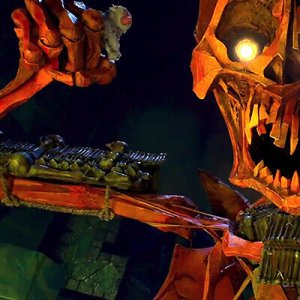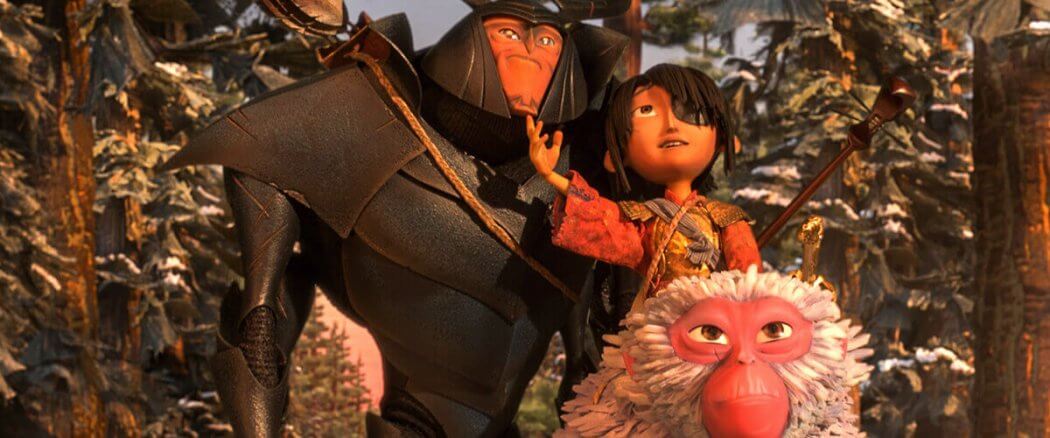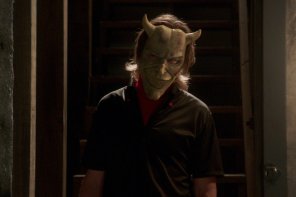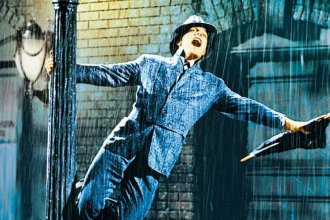A one-eyed boy, a giant beetle, a samurai snow monkey and a magical shamisen with the power to manipulate paper. Now mix it together with some of the most beautiful character and set design in a family film in a long time and Kubo and the Two Strings has earned my recommendation just for its imagination. The story strikes a metaphysical chord as it overlays a heroic quest narrative with questions about the goodness of creation versus the detached “purity” of the spiritual world. It hits all the right sentimental notes with a healthy dose of action, peril and doesn’t shy away from death. Go see it while it’s still in theaters to appreciate the depth of the artistic achievement.
One Frame Per Frame
First of all, Kubo and the Two Strings is a technical masterpiece. I’m a sucker for stop-motion animation: from the old Ray Harryhausen monsters to Will Vinton’s TV comedies (what? you’ve  never seen the California Raisins Christmas Special from 1987? Go watch it now!) to Henry Selick’s intricate world-building. There’s something about the grind of the process — where film is literally deconstructed into an exhausting 5-year photo shoot — that is beautiful to behold. Studio LAIKA (Coraline, Box Trolls, and others) is to stop-motion what Pixar is to computer animation: they break new ground with every film, often inventing new technology on the fly to accomplish their vision. In Kubo, for example, the largest stop-motion creature ever built is used so the animators could avoid computer compositing (seventeen feet tall). That’s dedication to your craft! I mean, the aforementioned Monkey has individual hairs that are animated by hand a single movement at a time to depict them blowing in a snowstorm. It’s wonderful. There are a few computer effects here, but most of the characters and their lush environment are practically realized.
never seen the California Raisins Christmas Special from 1987? Go watch it now!) to Henry Selick’s intricate world-building. There’s something about the grind of the process — where film is literally deconstructed into an exhausting 5-year photo shoot — that is beautiful to behold. Studio LAIKA (Coraline, Box Trolls, and others) is to stop-motion what Pixar is to computer animation: they break new ground with every film, often inventing new technology on the fly to accomplish their vision. In Kubo, for example, the largest stop-motion creature ever built is used so the animators could avoid computer compositing (seventeen feet tall). That’s dedication to your craft! I mean, the aforementioned Monkey has individual hairs that are animated by hand a single movement at a time to depict them blowing in a snowstorm. It’s wonderful. There are a few computer effects here, but most of the characters and their lush environment are practically realized.
The story is psuedo-Japanese. There are many elements that are borrowed from Japan’s rich heritage, both mythological and real. In Japan’s oldest prose narrative, for example, we meet a mysterious child banished to live among mortals who is sought by the people of the Moon when she comes of age. The Tale of Princess Kaguya, a studio Ghibli film from 2013, tells this story in a long (but faithful) animated adaptation. In Kubo, the eponymous hero must likewise hide away lest his grandfather the Moon King find him and force him to join his moon-family.
A God In Our Own Image
In the Moon King we have a deity-like figure who hates humanity. He sees nothing good about  humans, in fact he sees nothing at all because he is blind. Kubo (the product of a marriage between the Moon King’s favored daughter and Hanzo, a human samurai warrior) is partially blinded by his grandfather when he is born. Throughout the film the Moon King seeks Kubo to take his other eye so the young boy will reject his humanity and come live in the heavens. The blind god who is angry and sees the physical world as irredeemably bad is perhaps a jab at the perceived dualism in pop-Christianity. Laika’s 2012 movie ParaNorman was a barely-concealed swipe at fundamentalist Christians for being hateful and judgmental, so I wouldn’t be surprised if Kubo is trying to teach us another Important Lesson™ about religion.
humans, in fact he sees nothing at all because he is blind. Kubo (the product of a marriage between the Moon King’s favored daughter and Hanzo, a human samurai warrior) is partially blinded by his grandfather when he is born. Throughout the film the Moon King seeks Kubo to take his other eye so the young boy will reject his humanity and come live in the heavens. The blind god who is angry and sees the physical world as irredeemably bad is perhaps a jab at the perceived dualism in pop-Christianity. Laika’s 2012 movie ParaNorman was a barely-concealed swipe at fundamentalist Christians for being hateful and judgmental, so I wouldn’t be surprised if Kubo is trying to teach us another Important Lesson™ about religion.
Certain forms of Christianity, especially in the West, have slipped into a dualistic picture of reality. And it definitely deserves critique. The problem with the subtle message at the heart of Kubo is that the answer isn’t to double-down on the other side of the dualism coin (the material world), but to embrace a more holistic view of reality. The Incarnation should tear dualism down to nothing: God is both God and humanity simultaneously in Jesus. There is no natural/supernatural divide. There is only God and creation. Everything that is not God is created by God. “Heaven,” as much as we can understand it, is just as made as the universe. There are no supernatural miracles, only God sustaining all things. The world as we experience it — the here-and-now — was pronounced beautiful, not just blandly “good” (English!). God’s creation brought pleasure to the Creator. And of humanity God declares us to be excessively pleasurable. I imagine something like the satisfaction the crew at Laika felt when they saw their completed masterwork on the big screen for the first time! But times seventy-seven. It is only as we are in open insurrection against God that we ourselves mar God’s image within us. In other words: we’re the blind ones, not God, and He seeks us out to give us new eyes so that we might come to see us as He sees us. In the Moon King, we see only a petty, possessive straw man version of God who cannot understand or love humanity until he is overcome by the goodness of humanity and ultimately becomes human. In Christianity the opposite is true: God understands and loves us better than we ever can, and He becomes human because of our desperate need.
The spiritual subtext is cloaked in an epic quest narrative. On his way to a final showdown with the Moon King, Kubo must recover three powerful artifacts with a few magical friends to help. Like this year’s The Jungle Book reboot, Kubo is a great story for boys. It doesn’t play into gender  stereotypes: Kubo is strong but not aggressive, assertive but also afraid, confident but wounded. He needs Monkey and Beetle and cannot accomplish his quest without them. He isn’t the chosen one, he isn’t indestructible, there’s no prophecy. He’s a musician, an artist and a warrior. It’s a beautiful fantasy story that is a scary adventure which also asks good questions about how we can see beauty in a place where ugly things happen all the time. The subtext easily lends itself to talking about the Incarnation and how Jehovah-God sees us as His prized creation. Plus there are some amazing fight scenes between a samurai-sword wielding macaque and masked demigods swinging lethal kusarigama. Highly recommended!
stereotypes: Kubo is strong but not aggressive, assertive but also afraid, confident but wounded. He needs Monkey and Beetle and cannot accomplish his quest without them. He isn’t the chosen one, he isn’t indestructible, there’s no prophecy. He’s a musician, an artist and a warrior. It’s a beautiful fantasy story that is a scary adventure which also asks good questions about how we can see beauty in a place where ugly things happen all the time. The subtext easily lends itself to talking about the Incarnation and how Jehovah-God sees us as His prized creation. Plus there are some amazing fight scenes between a samurai-sword wielding macaque and masked demigods swinging lethal kusarigama. Highly recommended!





